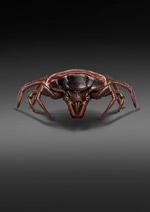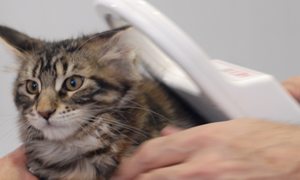
Let’s talk about ticks!

It’s important to check your pet regularly for ticks, especially if they like to venture into woodlands and long grass. Pay close attention to their ears, neck, skin folds and other crevices. Ticks can also bite and transmit diseases to humans so be sure that when checking your pet for ticks, you also check yourself.
Ticks are external parasites, which feed on the blood of animals and humans. They cannot fly or jump but use their eight legs to crawl into undergrowth and climb up long grasses from which they can fall on pets. They can range in size from a pinhead, up to around the size of a fingernail when fully swollen and engorged with blood.
|
There are about 850 tick species! |
The species of tick most likely to infest pets in the UK is the Ixodes species, often known as sheep, hedgehog or deer ticks. They are found in woodlands and parks, even in urban areas and particularly thrive among long grasses.
Adult ticks attach to larger animals such as deer, sheep or dogs.
- Ticks can cause irritation to pets and, if they are scratched off and the mouthparts left behind, small abscesses can result.
- Ticks can transmit bacteria, viruses and other parasitic infections as well as causing anaemia, especially in young animals.
|
Female ticks can lay around 2000 eggs |
Travelling with your pet?
If you travel outside the UK with your pet, there are other ticks - and diseases that they carry - to consider that can be harmful to pets and humans, so talk to your vet before you go.
Found a tick on your dog or cat?
- Use a specially designed tick removal tool to safely and effectively remove attached ticks whilst ensuring that the mouthparts are not left behind
Ask your vet about tick control as it can help repel, kill or prevent them from taking blood from your pet


